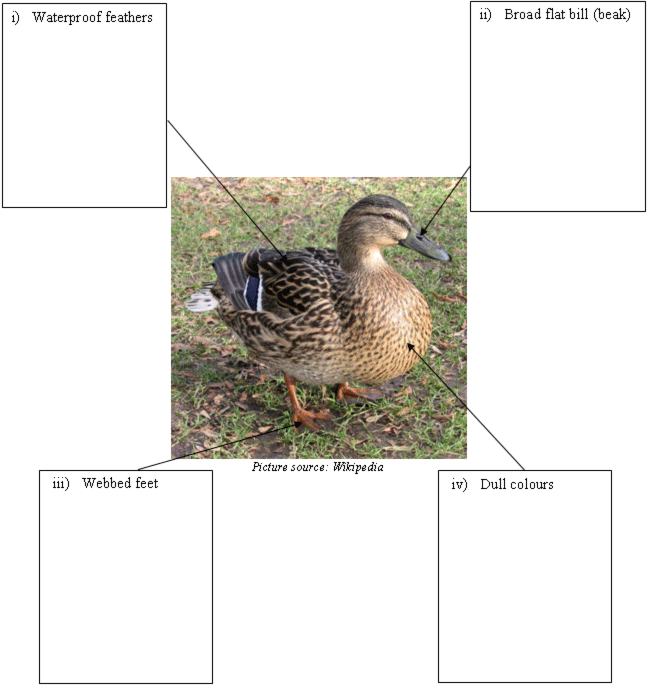Duck tales
This picture shows and labels some features of a female mallard duck that help it stay alive.
A duck’s features are all the parts of its body that, put together, make it look like a duck, for example a broad flat beak to help it feed in the water.
a) In each box below, describe how that feature helps the duck stay alive.

b) Write your ideas about what you think might happen if each of these features was different.

What would happen if ...
 i) Instead of a broad flat bill (beak) the duck had a long beak like a kiwi |
 ii) Instead of webbed feet the duck had small feet like a fantail |
iii) Instead of waterproof feathers the duck had feathers like a sparrow |
iv) Instead of dull colours the duck had bright colours like a parakeet |
||||
 |
 |
 |
 |
||||
|
|
|
|

